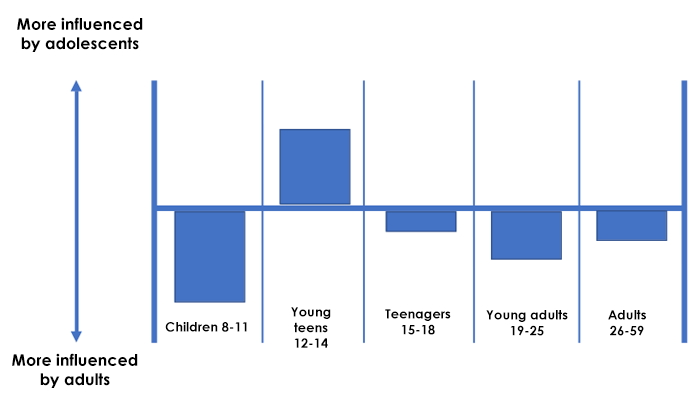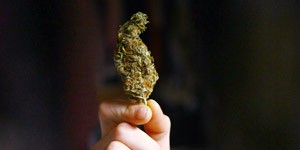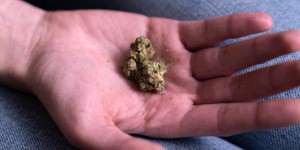By Alejandro Higuera Matas

Alejandro Higuera Matas has a degree in Psychology from the University of Granada and a PhD in Psychology (Psychobiology) from the National University of Distance Education (UNED). Since completing his doctoral thesis, he has always focused on the long-term effects of exposure to cannabinoids (synthetic and natural) in adolescence, with special interest in the Gateway Theory. He is currently Professor of Psychobiology at the UNED Faculty of Psychology. He is author of more than forty scientific articles on cannabinoids, animal addiction models and dual pathology. He has directed six doctoral theses and is Primary Researcher or Collaborator in more than 15 Spanish and international research projects. He has been a visiting researcher at the National Institute for Medical Research in London, at the Mount Sinai School of Medicine in New York, the Scripps Research Institute in Florida and at the University of Cambridge in the United Kingdom and guest lecturer at the National Autonomous University of Mexico and at Spanish and international conferences.
"Let's see if you make it through the awkward stage," "what a bad adolescence you're having," "adolescents don't have any respect," etc. These phrases are representative of society's perspective, sometimes negative, of adolescents. Perhaps there is no stage of human development that is more subject to prejudice and ignorance. Despite this, scientific research on adolescence and brain development is presently going though a golden age, and it is true that adolescence is an exciting development period.
In the early twentieth century, American psychologist Graville Stanley Hall said, "adolescence is a new birth, because this is when the highest and fully-human traits are born." What is going through teenagers' minds? Well, I wish we knew! Although we do have some clues; psychological research carried out in recent decades has revealed certain aspects that are worth highlighting. First, there is a certain consensus that going through adolescence implies carrying out a series of "vital tasks" such as "differentiating" in the sense of developing a unique identity and seeking autonomy. Teens also need to find their place; to "fit in," by establishing ties in which they are comfortable and feel accepted by their peers. They also have to meet expectations or "measure up," which implies developing certain skills and abilities. Finally, they also have to get involved in certain activities, beliefs, and goals[1].All this can be condensed into what psychologists call "creating your own identity," a "self."
One of the most frequently assumed notions is that adolescence is a period in which risky behaviours abound. It has been suggested that one of the reasons that adolescents may engage in this type of behaviour is failure in any of the tasks mentioned above. Some examples of these "risky behaviours" may include unprotected sex, the use and abuse of alcohol and other drugs, or reckless driving (especially in countries where younger adolescents are permitted to drive).However, as usual, things aren't so simple. There is a critical variable that must be considered in terms of adolescent behaviour, and that is the peer group influence, or friends and companions. To illustrate this, a study by Lisa Knoll in Sarah-Jayne Blakemore's group, one of the leading teenage neuroscientists, is interesting. In this study, people of different ages (visitors to the London Science Museum, where the experiment was conducted) were asked to assess the risk level in different situations (from crossing the street with a red light to cycling without a helmet or walking down a dark alley).Once the participants had evaluated the different situations, they were shown the evaluation that others had made, or at least this is what they were told, because in reality the risk evaluations they were shown were computer generated. Afterwards, they were asked to reassess the previous situations. It is important to note that they were told that the evaluations were made either by adults or by adolescents. The results were extremely interesting. All the participants, regardless of age group, changed their ratings after seeing the "others'" ratings, which indicates the influence that others have on our judgments. Although perhaps most interesting of all, while all age groups were influenced by being told that the ratings were made by adults, the younger teens showed a contrary trend. They only modified their risk assessment if they were told that the opinions they had been given came from other teens.[2] (See figure 1).

Figure 1: The effect of social influence on risk perception. Adapted from Knoll et al. [2].
As S.J. Blakemore concludes, the group of younger adolescents was very interesting because it shows that at that age, the authority of adults begins to be questioned and the opinion of other adolescents weighs more heavily. These data are very important when designing prevention campaigns aimed at this population group, because they indicate that the "model" figures that are given the most attention in early adolescence are adolescents themselves and that preventive messages should be based upon these figures[3].
All the changes that adolescents go through in their psychology from childhood to adulthood are accompanied by significant changes in their brain architecture. For example, the amount of grey matter (the cell bodies of nerve cells) in the adolescent brain shows a decreasing trend between the ages of 15 and 20 in certain structures such as the thalamus (involved in sensory processes, among other things) or the striated body (whose functions include motor coordination and learning behavioural habits).In other structures such as the hippocampus (involved in memory processes) and the amygdala (which is responsible, among many other functions, for regulating emotions), a certain increase is observed up until the age of 15, which is when stabilisation, or a small drop, occurs. Although these changes usually occur in parallel in boys and girls, in some structures such as the cerebellum, it seems that they follow different trajectories depending on gender [4].Another important change that occurs during brain development in adolescence is that the connections between the different parts of the brain are strengthened. For this to happen, there must be two processes. The first of these changes is an increase in myelination (that is, coating with myelin layers) of the axons in the neurons, which can last up to 30 years or even more. Myelin is an insulating substance that favours nerve impulse conduction and this myelination process is crucial for the brain's normal functioning. The second of these is the proliferation of inhibitory synapses, which act as buffers or switches, ensuring that nerve impulses occur only in the appropriate neurons[5].
Where does the endocannabinoid system (ECS) come into play in all of this? In recent years, research has shown that changes are also observed in the different ECS components during adolescence. Various experiments in animal models have shown that the levels of the two most important endocannabinoids, anandamide and 2-arachidonyl glycerol (2-AG), vary during adolescent development [6].In humans, it has also been shown that there are variations in the number of CB1 receptors (another ECS element) with age [7].Although not clearly understood, these variations may well contribute towards orchestrating the maturation of other inter-neuronal communication systems, which also occurs in adolescence. Therefore, far from what was traditionally thought, many important maturational processes are occurring in the brain in general and in the ECS in particular during adolescence. So any alteration in these processes can have potential consequences for the individual's brain and psychological development.
Perhaps one of the most worrying aspects in this regard is exposure to stressful life situations or other types of circumstances such as psychoactive substance consumption (recreational drugs or even some psychotropic medications), since it has been observed that these situations, when occurring in this period of great vulnerability, can have significant consequences for the individual's development, and don't occur when these circumstances arise in the adult stage. However, it is also true that the adolescent brain's great plasticity could be an advantage when introducing repair strategies. Think of a teenager who has experienced the trauma of war, or abuse. It is very likely that these events may condition his or her psychological and cerebral development, although it is also possible that this adolescent stage, with the great cerebral and behavioural plasticity associated with it, opens an opportunity to correct the negative consequences of these traumas. This dual perspective is what I wanted to call "Hopes and Fears."
Fears
There has been a lot of talk about the possible negative effect of cannabinoid use during adolescence. It is not my intention to review all available data here, with its strengths and weaknesses, because it would take forever. I will focus on two aspects that have been researched in my laboratory in recent years. The first of these is the so-called Gateway Theory. It has been suggested that cannabis could be one of the drugs that predispose the use of other "harder" drugs in adulthood. It should be mentioned here that in its initial version, this theory placed alcohol and tobacco before cannabis, so there would be a specific sequence of events that would configure this vulnerability [8] [9].This initial hypothesis has had defenders and detractors and neuroscience has attempted to establish whether there could be any biological basis for it. Different studies suggest that if THC or a more potent synthetic cannabinoid is administered to adolescent rats, morphine, cocaine or heroin consumption increases in adulthood[10].This research studied aspects related to drug use, the motivation for it and relapse, although it didn't examine other crucial addictive behaviour characteristics such as loss of control over use or the drug's compulsive nature (in other words, continue consuming or searching for the drug despite the negative consequences).Also, in most cases, the research was only carried out with male animals, so the data on females (and the possible extrapolation that could be made to adolescents) is complicated at this time. I would like to emphasise that certain aspects of these animal studies, with all their strengths, should be improved for the future. For example, including cannabidiol (CBD) in adolescent treatment (with THC:CBD ratios similar to those obtained in cannabis varieties consumed by adolescents) and also allow the animal to consume the cannabinoid mixture during adolescence instead of administering it via injection or inhalation. It is true, however, that animal models are becoming increasingly sophisticated and enable a possible biological basis for this potential Gateway to be established, separating the relative contribution of cannabis from that of other drugs that are frequently consumed in adolescence, such as alcohol and tobacco.
Another of the most-talked-about fears is the relationship between the early use of cannabis during adolescence and the potential to develop a schizophrenia spectrum disorder. This association can be discussed based on the evidence collected to date [11], although genetic and epidemiological studies are not conclusive on the direction between cause and effect (or on what comes first, the chicken or the egg).In any case, this well-founded fear also opens the door to the first of the hopes.
Hope
Animal model studies suggest that cannabinoid administration (either THC or CBD) may have corrective effects on the deleterious actions of stressful life events or prolonged recreational drug use.For example, CBD administered during adolescence can reverse attention deficit and dopaminergic disorders observed in an animal model of symptoms related to schizophrenia [12].
Synthetic cannabinoids administered at the correct dose during adolescence can also improve behavioural deficits and disturbances in synaptic plasticity to some extent (the ability of neurons to increase or decrease the strength of their contacts as a result of experience) caused by intense stress.
Finally, and in relation to the effects of drug use, research in rats showed that exposure to THC during adolescence could block what researchers called "opioid dependence," which occurred in animals exposed to a stressful situation, this time during childhood, separation from their mother [13].
I always say that there are no simple answers to complex questions and of course everything related to development during adolescence and its possible alterations is a problem that may well be described as complex. At this time, the only sensible course of action is to attentively and calmly read the available data, conduct more research and collect more information in the hope that, in the future, the Gordian Knot we are facing today can be untied.
Works cited
[1] Institute of Medicine (US) and National Research Council (US) Committee on the Science of Adolescence, «The Science of Adolescent Risk-Taking: Workshop Report,» National Academies Press (US), Washington, 2011.
[2] L. J. Knoll, L. Magis-Weinberg, M. Speekenbrink y B. Sarah-Jayne, «Social Influence on Risk Perception During Adolescence,» Psychological Science, vol. 26, nº 5, pp. 583-592, 2015.
[3] S.-J. Blakemore, Inventing Ourselves. The Secret Life of the Teenage Brain, Londres: Transworld Publishers, 2018.
[4] L. Foulkes y S.-J. Blakemore, «Studying individual differences in human adolescent brain development,» Nature Neuroscience, vol. 21, pp. 315-323, 2018.
[5] V. Molina, El Cerebro Adolescente. La construcción de la identidad., Barcelona: RBA, 2017.
[6] M. Ellgren, A. Artmann, O. Tkalych, A. Gupta, H. Hansen, S. Hansen, L. Devi y Y. Hurd, «Dynamic Changes of the Endogenous Cannabinoid and Opioid Mesocorticolimbic Systems During Adolescence: THC Effects,» European Neuropsychopharmacology, vol. 18, nº 11, pp. 826-834, 2008.
[7] K. V. Laere, K. Goffin, C. Casteels, P. Dupont, L. Mortelmans, J. d. Hoon y G. Bormans, «Gender-dependent Increases With Healthy Aging of the Human Cerebral Cannabinoid-Type 1 Receptor Binding Using [(18)F]MK-9470 PET,» Neuroimage, vol. 39, nº 4, pp. 1533-1541, 2008.
[8] D. Kandel y E. Kandel, «The Gateway Hypothesis of substance abuse: developmental, biological and societal perspectives.,» Acta Paediatrica, vol. 104, nº 2, pp. 130-137, 2015.
[9] D. Kandel, «Stages in adolescent involvement in drug use,» Science, vol. 190, pp. 912-914, 1975.
[10] A. Higuera-Matas, M. Ucha y E. Ambrosio, «Long-term Consequences of Perinatal and Adolescent Cannabinoid Exposure on Neural and Psychological Processes,» Neuroscience and Biobehavioral Reviews, vol. 55, pp. 119-146, 2015.
[11] A. Levine, K. Clemenza, M. Rinn y J. Lieberman, «Evidence for the Risks and Consequences of Adolescent Cannabis Exposure,» Journal of the American Academy of Child & Adolescent Psychiatry, vol. 56, nº 3, pp. 214-225, 2017.
[12] F. V. Gomes, F. S. Guimaraes y A. A. Grace, «Effects of Pubertal Cannabinoid Administration on Attentional Set-Shifting and Dopaminergic Hyper-Responsivity in a Developmental Disruption Model of Schizophrenia,» International Journal of Neuropsychopharmacology, vol. 18, nº 2, 2014.
[13] L. J. Morel, B. Giros y V. Daugé, «Adolescent Exposure to Chronic delta-9-tetrahydrocannabinol Blocks Opiate Dependence in Maternally Deprived Rats,» Neuropsychopharmacology, vol. 34, pp. 2469-2476, 2009.


